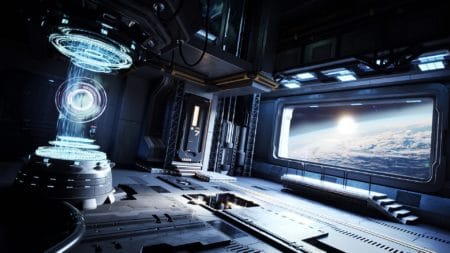The folks at Chaos Group have announced the next major release for V-Ray for Maya, a new version of its Academy Award-winning renderer. The latest version goes beyond just faster production rendering, it adds powerful scene intelligence and a streamlined Maya workflow for high-end VFX and animation projects.
“V–Ray Next is designed to support Maya artists at every level, providing faster workflows through a new set of features and optimizations,” said Vlado Koylazov, CTO and co-founder at Chaos Group. “Now with better IPR and viewport rendering, artists can concentrate more on their creative ideas and the details that make their scenes and characters come alive.”
What’s New in V-Ray Next for Maya
V-Ray Next for Maya is overall 25 percent faster on average, reports the Chaos Group. Artists will be able to accomplish more iteration and reach production goals more quickly. New scene intelligence analyzes and optimizes render calculations automatically with no added input. These features work with Adaptive Dome Light, helping users render content an additional 2x – 7x faster depending on the nature of the scene.
More Powerful Interactive Rendering
V-Ray Next boosts improved IPR that runs directly from the Maya viewport or the V-Ray Frame Buffer, ensuring faster interactive speeds and workflows. Interactive rendering performance boosts mean not just faster time to first pixel but continuous updates during editing and scrubbing animations. It is now possible to render V-Ray-quality playblasts for animation previz.
A new “Debug” shading mode has been added to V-Ray Next for Maya, helping artists speed through look development. The feature helps artists isolate selected materials, textures, objects and lights to quickly analyze and fine-tune specific aspects of their scene. And with the new GPU-accelerated AI Denoiser, noise-free updates are now possible at interactive speeds, providing instant insights into lighting setups.
GPU Production Rendering
V-Ray Next for Maya brings a production-ready GPU renderer to professional studios. Built on a new GPU rendering architecture, V-Ray GPU is now 2x faster on average, compared to the previous GPU renderer. V-Ray GPU Next adds support for fast rendering of volumetric effects such as smoke, fire, and fog. And the addition of GPU bucket rendering adds support for faster distributed rendering as well as Cryptomatte output for better control in compositing.
Other new features in V-Ray Next for Maya include improvements to physical hair, lens effects, and the physical camera. There is new support for V-Ray Layered Textures, Toon Shader improvements, Layered Alembic workflows and more.
There is now also V-Ray Cloud support built in (beta) and users can render scenes directly to the cloud at the push of a button.
To see the complete feature lists visit here.
Pricing and Availability
V–Ray Next for Maya is available now for Windows, Linux and Mac OS X. A full Workstation license is priced at $1,180, with upgrades available for $420. V–Ray Next for Maya also introduces a subscription option, priced at $470 (annual) and $80 (monthly). For full pricing information, including additional render nodes, please visit the product page.




Reader Comments
Comments for this story are closed